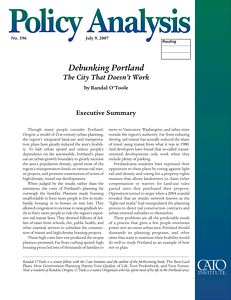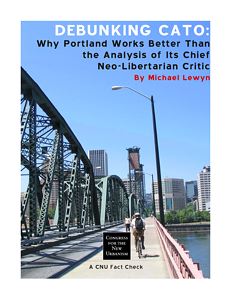Portland’s well-publicized planning process is having insignificant effects on travel habits of the region’s residents. Instead, it is simply leading to more and more costly congestion. Yet the Congress for the New Urbanism wants to believe that the system is working so badly that it is willing to selectively use numbers that seem to support its case without looking at the big picture.


Transit’s Anemic Growth
Michael Lewyn’s critique of my paper on Portland reviews Portland’s transit ridership starting in 1986, the year Portland opened its first light-rail line. From this point of view, light rail looks successful. This selective use of data neglects to observe the decline in ridership, and huge decline in transit’s share of travel, that took place during construction of the light-rail line. In a pattern that would be repeated in many other cities, rail cost overruns in the early 1980s forced TriMet, Portland’s transit agency, to reduce bus service and raise fares.







